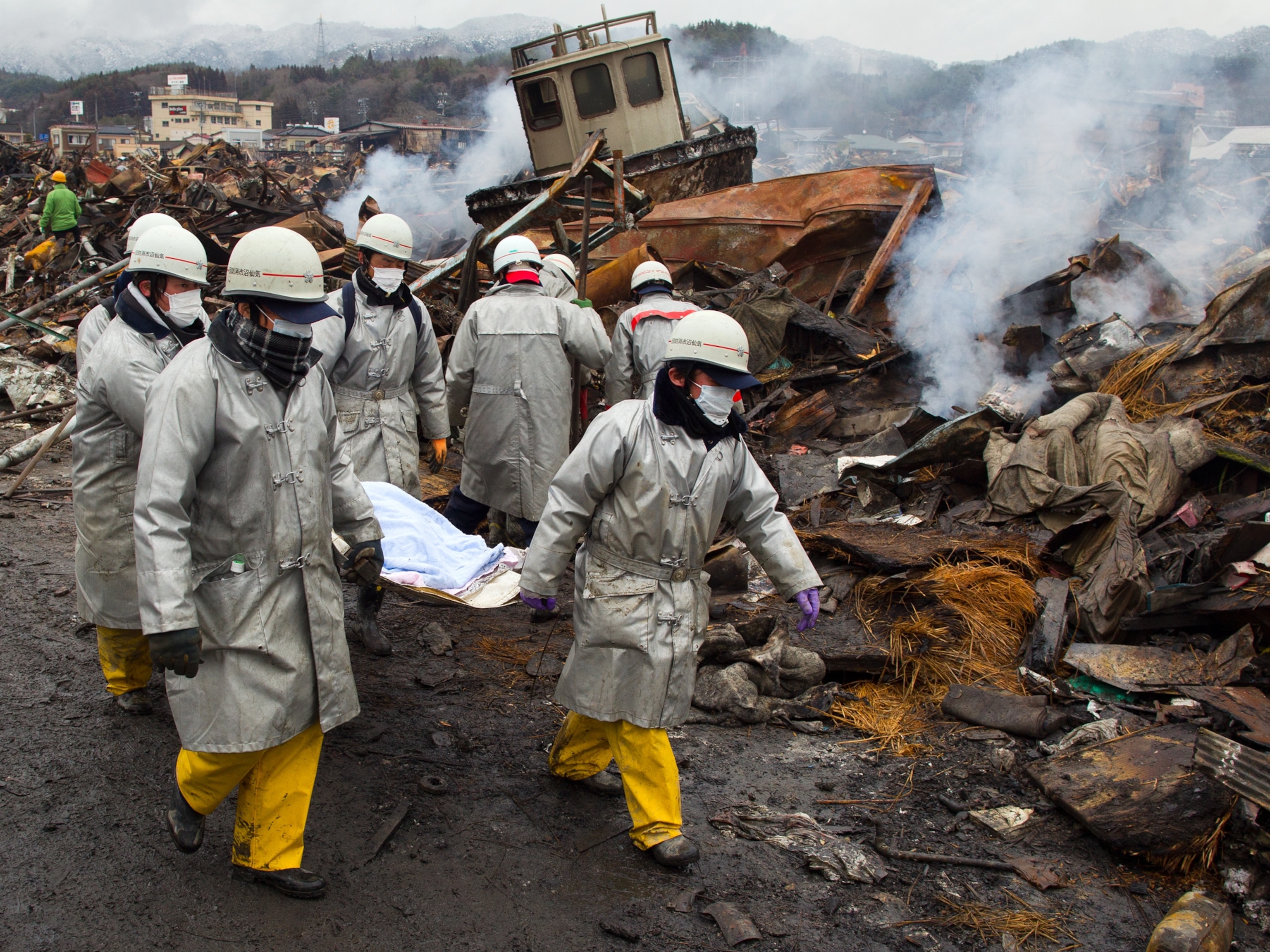
Sustainable Earth: Disasters
Rio+20 shows how shoring up natural ecosystems can help protect us from Mother Nature's fury.
Natural disasters are a fact of life.
There's no controlling Mother Nature, and her wrath can, at times, be staggering. Last year, natural disasters—from droughts in Africa and Russia to typhoons and massive flooding in Thailand—caused a record $378 billion worth of damage.
The indications are that the situation will get worse, not better. Climate change is likely to make weather patterns more extreme. There's no ignoring the problem, but there remains a critical question: What protects us better, human engineering or natural landscapes? There's a natural human urge to rely on the things we make, but the lessons of the past decade have led in a different direction.
Often, the great works of civil engineering that we built as insurance against disaster had the opposite effect. Hurricane Katrina is a great example. Over the past century, the levees built to protect low-lying New Orleans choked off the natural wetlands that once served as a buffer between the Big Easy and the Gulf of Mexico. Erosion has wiped out 1,900 square miles of wetlands since the 1930s.
Natural Defenses
Researchers estimate that every 2.7 square miles of wetlands reduces storm surge by a foot. So when the hurricane hit—with the area's natural buffers mostly gone—the resulting flooding overwhelmed the city's elaborate man-made defenses, leading to the worst natural disaster to hit the U.S. in decades.
In Katrina's case, environmental degradation played a direct role in turning a bad storm into a total catastrophe. But in other places, it's the sheer complexity of the human-built environment that makes it more prone to catastrophic failure. Take last year's tsunami on the northern coast of Japan. It was bad enough by itself, but it was made worse when it set off a chain reaction that caused a meltdown at the Fukushima nuclear power plant.
That's why the upcoming United Nations Conference on Sustainable Development (Rio+20) will take a look at disaster preparedness from a different angle. Is it possible to use "green" methods to avert catastrophe?
"The natural infrastructure provided by ecosystems is often more locally accessible and less expensive to maintain than human-made, or 'gray' infrastructure," UN Environmental Program (UNEP) Director Ibrahim Thiaw said recently. "Healthy ecosystems are the best 'insurance cover' for those who depend on natural resources for their livelihoods and ultimately provide multiple social, economic, and environmental benefits regardless of whether a disaster occurs or not."
Blueprint for Action
Combining disaster preparedness with sustainable development may be a hard sell, but successful efforts are already under way. Even the Netherlands—one of the most engineered countries in the world—has instituted a program to make "Room for the River," re-establishing the floodplains of its rivers.
Can sustainable development plans go hand in hand with disaster prevention? We'll only know for sure in time.
Related Topics
You May Also Like
Go Further
Animals
- Soy, skim … spider. Are any of these technically milk?Soy, skim … spider. Are any of these technically milk?
- This pristine piece of the Amazon shows nature’s resilienceThis pristine piece of the Amazon shows nature’s resilience
- Octopuses have a lot of secrets. Can you guess 8 of them?
- Animals
- Feature
Octopuses have a lot of secrets. Can you guess 8 of them?
Environment
- This pristine piece of the Amazon shows nature’s resilienceThis pristine piece of the Amazon shows nature’s resilience
- Listen to 30 years of climate change transformed into haunting musicListen to 30 years of climate change transformed into haunting music
- This ancient society tried to stop El Niño—with child sacrificeThis ancient society tried to stop El Niño—with child sacrifice
- U.S. plans to clean its drinking water. What does that mean?U.S. plans to clean its drinking water. What does that mean?
History & Culture
- Gambling is everywhere now. When is that a problem?Gambling is everywhere now. When is that a problem?
- Beauty is pain—at least it was in 17th-century SpainBeauty is pain—at least it was in 17th-century Spain
- The real spies who inspired ‘The Ministry of Ungentlemanly Warfare’The real spies who inspired ‘The Ministry of Ungentlemanly Warfare’
- Heard of Zoroastrianism? The religion still has fervent followersHeard of Zoroastrianism? The religion still has fervent followers
- Strange clues in a Maya temple reveal a fiery political dramaStrange clues in a Maya temple reveal a fiery political drama
Science
- NASA has a plan to clean up space junk—but is going green enough?NASA has a plan to clean up space junk—but is going green enough?
- Soy, skim … spider. Are any of these technically milk?Soy, skim … spider. Are any of these technically milk?
- Can aspirin help protect against colorectal cancers?Can aspirin help protect against colorectal cancers?
- The unexpected health benefits of Ozempic and MounjaroThe unexpected health benefits of Ozempic and Mounjaro
- Do you have an inner monologue? Here’s what it reveals about you.Do you have an inner monologue? Here’s what it reveals about you.
Travel
- Follow in the footsteps of Robin Hood in Sherwood ForestFollow in the footsteps of Robin Hood in Sherwood Forest
- This chef is taking Indian cuisine in a bold new directionThis chef is taking Indian cuisine in a bold new direction
- On the path of Latin America's greatest wildlife migrationOn the path of Latin America's greatest wildlife migration
- Everything you need to know about Everglades National ParkEverything you need to know about Everglades National Park




